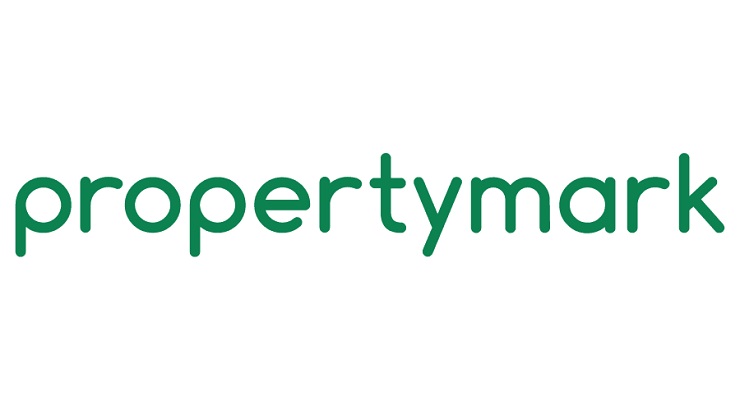Breaking Property News – 17/01/24
Daily bite-sized proptech and property news in partnership with Proptech-X.
Material Information in Property Listings: Parts A, B and C explained by Inventorybase
Inventorybase understanding the huge importance of the recent guidance issued by the National Trading Standards’ Estate and Letting Agency Team in Q4 last year. Outlines the long-awaited updates to material information, specifying the ins and outs of the recent additions parts B and C, as well as the legal obligations of agents under the Consumer Protection from Unfair Trading Regulations 2008.
Inventorybase, ‘Everyone in the property industry is aware that property professionals will be under a further duty of care to consider the context and circumstances of each property listing to determine what is material in any given situation; with intentions to clear up any debate surrounding what should be included in property listings. Failure to get it right or omit the deeper levels of detail now prescribed, will no longer be acceptable.
Maria Harris, the chair of the Open Property Data Association (OPDA), welcomed the updates to material information, saying: “This is another key milestone on our journey to digitising the home buying process. This new guidance will improve transparency and interoperability, creating a better customer and user experience.
“Brokers, lenders, valuers and the buyer’s conveyancer will have the information they need from verified sources at the beginning of the transaction. This will mean fewer nasty surprises too late in the process, fewer fall throughs and delays. The guidance should also mean better protection for the consumer.”
The Estate and Letting Agent Team also documents practical advice on how to proactively request and verify material information, clearly display it in property listings, and provide timely updates when necessary.
It’s important to note that this guidance is not a standalone document, and should be considered alongside other legal and regulatory obligations contained in the NTSELAT Guidance for Property Sales and Lettings, the Consumer Protection from Unfair Trading Regulations 2008, any professional obligations (such as redress scheme membership), as well as legislation like the Tenant Fees Act 2019 in England.

What is Material Information?
Material information is defined in the Consumer Protection from Unfair Trading Regulations 2008 as “information which the average consumer needs, according to the context, to take an informed transactional decision”.
This means that material information includes any details that would impact a consumer’s decision concerning a property, such as arranging a viewing, putting in an offer to rent, and proceeding with any other aspect of the transaction.
Material information is therefore crucial for consumers to make informed decisions when engaging in property transactions. Material information is outlined in three parts, A, B and C. Here’s what each involves:
What is Part A material information?
Part A of the material information guidance includes details that are considered material in all circumstances, regardless of the outcome. This information is essential for consumers to make an informed decision about whether to further consider a property.
Part A material information includes:
- Council Tax band or Domestic Rates information
- Rent amount
- Details of any deposit(s) payable
These details are deemed crucial for consumers to assess and evaluate a property for potential rental, and therefore, they are categorised as “Part A” material information – the foundation of any property listing. Part A has been active for some time, so this will not be new if you work in an agency setting.
What is Part B material information?
Part B material information consists of details that should be established for all properties and are considered material information more generally. This information may encompass costs associated with maintenance or repair, anything that might knowingly impact a tenant’s enjoyment of the property, or things that affect the availability of relevant insurance products.
Part B material information includes:
- The physical characteristics of the property
- The number and type(s) of room(s)
- Utilities such as electricity supply, water supply, sewerage, heating, broadband, and mobile signal/coverage
- Parking
Further to the details set out in Part A, these items have now become an essential part of material information, giving consumers added context for the property they might be considering.
What is Part C material information?
Part C material information takes things one step further, covering details that may or may not need to be established, depending on whether the property is affected or impacted by the issues in question. For example, this could be because of the location of the property, where there is a possibility of this information impacting on the tenant’s enjoyment or privacy, or if there is a potential issue around safety.
Part C material information includes:
- Building safety
- Restrictions and rights
- Flood and erosion risk
- Planning permission and proposals for development
- Property accessibility and adaptations
- Coalfield or mining area
The legal obligations for agents in the UK
Regarding the disclosure of material information in property listings, according to the Consumer Protection from Unfair Trading Regulations 2008, all businesses in the UK have a legal duty not to omit information which is material to the average consumer’s transactional decision.
For agents, this means that they must include material information on residential property listings, which, as we have already seen, is defined as “information which the average consumer needs, according to the context, to take an informed transactional decision”.
This decision rests on several considerations, so agents should judge the context and circumstances of each property listing to determine what is material in that given situation. It is also important to note that the consumer protection regulations make it an offence to omit or hide material information, or to provide it in a manner that is unclear, unintelligible, ambiguous, or untimely.
How does the guidance help agents navigate the challenges of providing material information to consumers?
The guidance assists agents in navigating the challenges of providing material information to consumers in several ways:
The Definition of Material Information: The document provides a clear definition of material information, helping agents understand the scope of information that needs to be disclosed.
Consideration of Context and Circumstances: Agents are encouraged to consider the context and circumstances of each property listing to determine what is material information in that scenario. This approach acknowledges that the relevance of information may vary depending on the specific property and the potential tenants it is likely to attract.
Proactive Request and Verification: Letting agents are advised to proactively request material information to create property particulars and to carry out verification checks on the information provided to ensure its accuracy. This proactive approach helps agents gather and confirm the necessary information for disclosure.
Clear Display of Information: The guidance emphasises the importance of prominently and clearly displaying material information in property listings, ensuring that it is not hidden, unclear, or ambiguous. This clarity is essential for consumers to make informed decisions.
Timely Disclosure: Agents are reminded of the obligation to provide material information on time, and update property listings and inform interested parties as soon as possible when material information becomes known or has changed.
Legal Compliance: The guidance also outlines the legal obligations of agents under the Consumer Protection from Unfair Trading Regulations 2008, providing clarity on the potential consequences of failing to disclose material information.
All in all, the guidance will be a useful reference for agents moving forward, giving them a clear understanding of their responsibilities and providing practical advice on how to effectively navigate the challenges of procuring and providing material information in property listings.’
Inventorybase is your own personalised platform for effective property management and reporting. Designed and built for the residential & lettings market, build unlimited property reports to capture property condition, photos and issues right from your mobile or tablet using our inspection app. So you can produce professional inventories, check ins, check outs, interim inspections, building inspections, risk assessments & more using our award winning inspection software.
Accruent Acquires RedEye to accelerate strategy with next-generation engineering document management system
SaaS acquisition transforms engineering document management with a modern, centralized hub for managing engineering drawings, documents and media securely from any device
Austin, TX, January 2024: Accruent, the leading provider of workplace and asset management solutions and Fortive company (NYSE: FTV), announced today that it has acquired RedEye, an Australia-based engineering document management company specializing in cloud-native solutions. This acquisition reflects Accruent’s ongoing commitment to providing differentiated, cloud-enabled solutions to drive business productivity.
RedEye’s addition to Accruent’s engineering document management system (EDMS) portfolio, which includes Meridian, provides customers with expanded options for storing and accessing their documents. This acquisition further solidifies Accruent’s leadership in the EDMS space, offering a versatile SaaS solution that enables customers across various industries, whether on-premise or cloud-based, to securely manage their engineering documents, drawings, and media from any device.
The RedEye solution: Expedites drawing discovery with advanced search capabilities, leveraging rich metadata, GIS, and QR codes for instant retrieval; Safeguards intellectual property and data in an ISO 27001 compliant solution; Provides robust API connectivity to seamlessly integrate documents across business systems.
Customers will have access to regional data hosting hubs designed to ensure compliance with privacy and security regulations applicable to their business. The offering is tailor-made for operating and maintaining complex facilities across manufacturing, oil and gas, utilities, mining, and pharmaceutical.

Bill Pollak, President of Accruent, comments, “This acquisition underscores our commitment to delivering industry-leading solutions across our portfolio, with a continued investment in comprehensive solutions across the facility and asset workflow, while further expanding Accruent’s presence in the region. Overall, RedEye’s industry-focused, cloud-native solution, coupled with its strong customer satisfaction, aligns with our investment strategy and long-term objectives.”
Andrew Stanton Executive Editor – moving property and proptech forward. PropTech-X









